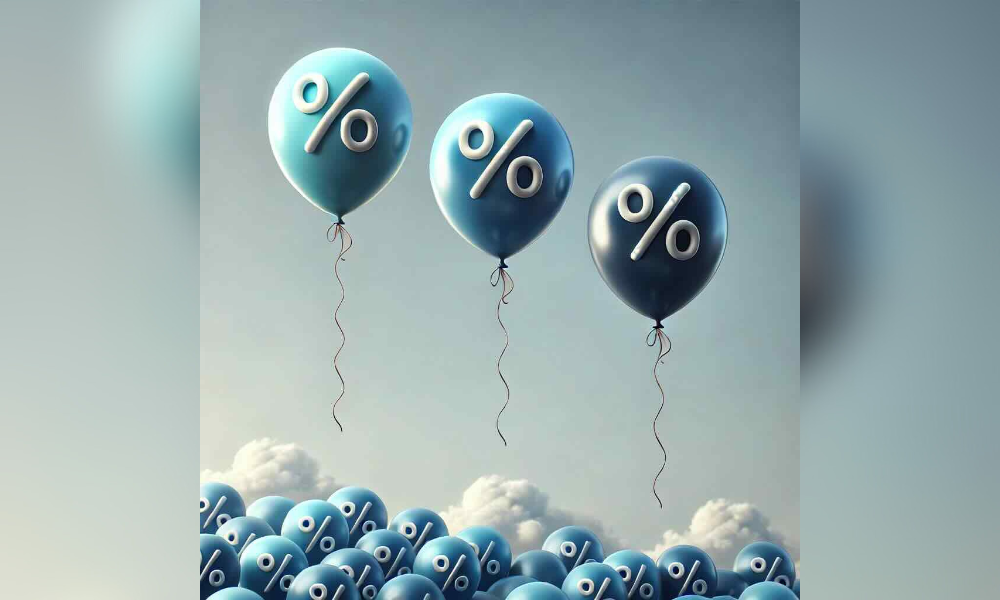Big lender follows Barclays, others passing on rising swap rates

Investor fears are driving swap rates up as we all wait to see what Reeves’ budget holds for us – and the big mortgage lenders are having to deal with their borrowing costs going up in tandem with those pesky swaps.
As a result, TSB Bank is raising the cost of select residential and buy-to-let mortgage products just before Chancellor Rachel Reeves is set to present her mischief night Budget to Parliament. The impending Budget has already created uncertainty in the financial markets, leading to increased wholesale borrowing costs, which are used by lenders to determine their fixed mortgage rates.
Read more: Worried that Reeves may ruin mortgage rates? Trump could be the real worry
The changes, effective October 30, will affect TSB’s short-term fixed-rate mortgages offered through brokers. The bank is increasing rates for borrowers with deposits between 10% and 25% - equating to loan-to-value (LTV) ratios from 75% to 90% - by up to 0.1 percentage points for two-year purchase deals. Additionally, TSB is raising the rate for two-year fixed remortgage products at 60% LTV by 0.25 percentage points.
Currently, the bank offers a two-year remortgage option at a rate of 4.09% with a £1,495 fee, or at 4.19% with a reduced fee of £999. These new rate changes will go live on TSB's website starting October 30, making them applicable to new applicants.
Buy-to-let borrowers are also affected by this latest move. TSB announced that it would raise two- and five-year fixed-rate deals by up to 0.1 percentage points, but only for landlords with at least 25% equity or deposit in their property.
Read more: Are Brexit voters better with mortgages?
Some good news is that the Bank of England's latest data shows a rise in mortgage approvals despite the challenging economic environment. Net approvals for house purchases reached 65,600 in September, an increase of 700 from August, marking the highest level since August 2022.
Remortgage approvals also saw a boost, rising to 30,800 - up 3,100 from the previous month. These increases suggest that despite higher borrowing costs, there is still significant activity in the mortgage market – but how long it will last is anyone’s guess.
The timing of TSB’s rate hikes coincides with a surge in the UK’s long-term borrowing costs, driven by those investor concerns over the upcoming Budget. Chancellor Rachel Reeves is expected to announce plans for substantial new borrowing later today, with estimates suggesting an additional £20 billion per year will be allocated to projects such as green energy, infrastructure, healthcare, and education.
Read more: Is a two-year fixed mortgage the new sweet spot?
This spike in borrowing has led to increased bond yields, which reflect investor anxieties about rising debt levels. On Tuesday, yields on 10-year government bonds reached 4.32%, the highest level since June. As recently as mid-September, the yield stood at just 3.75%, demonstrating the sharp impact of market expectations on borrowing costs.
Reeves has emphasised that her spending plans will be governed by strict fiscal rules (that she is about to, ahem, change) with a focus on long-term investments to stimulate economic growth. "The only way to grow economic growth is to invest, invest, invest," she is expected to say when presenting the Budget, which is anticipated to be one of the largest tax-raising efforts in modern history.
TSB’s decision to increase mortgage rates reflects a broader trend among lenders who are adjusting to rising borrowing costs. As wholesale rates climb, banks are seeking ways to maintain profitability while managing customer expectations. TSB’s changes align with efforts by other financial institutions to streamline operations, reduce unnecessary expenses, and prepare for potentially lower margins.
Read more: Santander starts slashing jobs
With the Budget likely to relax fiscal rules and raise additional funds for public services and infrastructure projects, borrowing costs may remain volatile in the near term – which is why borrowers may be locking into the shorter -term fixed rates – like those TSB has just increased rates on.
Why Reeves’ unknown borrowing plans are driving up swap rates
There has been a lot of speculation about just how much Reeves wants to inject into the economy – and when the government increases spending or introduces tax cuts funded by borrowing, it can stimulate economic demand, which leads to inflationary pressures. Central banks like the Bank of England, which focus on managing inflation, could respond by raising interest rates to keep inflation in check. Economists use different models to predict how much borrowing could drive up interest rates.
The Treasury has assessed this issue using the Office for Budget Responsibility’s (OBR) simplified macroeconomic framework, focusing on key variables such as the output gap, inflation, the Bank Rate, and the nominal exchange rate. This model treats fiscal changes as sudden, creating a demand shock in the economy. According to their analysis, an increase in government borrowing equal to 1% of GDP could push interest rates up by 60 basis points.
However, persistent inflation has made interest rates more responsive to demand shocks than in the past. By adjusting economic models, such as the Phillips curve, to account for a tight labour market and other current conditions, economists now estimate that borrowing 1% of GDP could raise interest rates by as much as 125 basis points.
The broader economic risks of increased borrowing remains a concern, especially as the UK’s debt levels have reached unprecedented heights. As Isabel Stockton, a senior economist at the IFS, pointed out, "It is crucial that the Government makes the case why these risks are worth taking, and how it will ensure the additional investment will be well spent."



